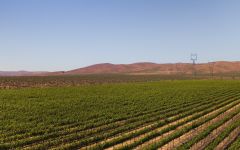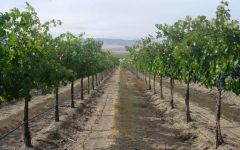CasaSmith ViNO Rose 2017
-
Jeb
Dunnuck



Product Details
Your Rating
Somm Note
Winemaker Notes
Professional Ratings
-
Jeb Dunnuck
The medium gold/salmon colored 2017 ViNO Sangiovese Rosé offers a vibrant, strawberry and cherry-scented bouquet as well as a rounded, supple, nicely textured style. With both racy acidity and a fleshy, textured, salty style on the palate, it's a versatile rosé to drink over the coming 6-12 months.
Other Vintages
2015-
Robert
Parker





Winemaker Charles Smith owns CasaSmith, a collection of Washington-grown wines made from classic Italian varietals. Starting in the north of Italy, Barbera from Piedmont, followed by Sangiovese from Tuscany and Primitivo from the Puglia in the south; these wines represent the best of Italy but are grown and produced in Washington by Famiglia Smith.
Each wine is named after an animal native to historic Italian grape-growing regions, as depicted on the labels. Barbera is Cervo, for a deer native to Piedmont; Sangiovese is named Cinghiale, for the wild boar of Tuscany; and Primitivo is Porscopino, a crested porcupine from Puglia.
CasaSmith wines are delicious daily, alone or accompanying your favorite Italian dish.

Whether it’s playful and fun or savory and serious, most rosé today is not your grandmother’s White Zinfandel, though that category remains strong. Pink wine has recently become quite trendy, and this time around it’s commonly quite dry. Since the pigment in red wines comes from keeping fermenting juice in contact with the grape skins for an extended period, it follows that a pink wine can be made using just a brief period of skin contact—usually just a couple of days. The resulting color depends on grape variety and winemaking style, ranging from pale salmon to deep magenta.

A large and geographically diverse AVA capable of producing a wide variety of wine styles, the Columbia Valley AVA is home to 99% of Washington state’s total vineyard area. A small section of the AVA even extends into northern Oregon!
Because of its size, it is necessarily divided into several distinctive sub-AVAs, including Walla Walla Valley and Yakima Valley—which are both further split into smaller, noteworthy appellations. A region this size will of course have varied microclimates, but on the whole it experiences extreme winters and long, hot, dry summers. Frost is a common risk during winter and spring. The towering Cascade mountain range creates a rain shadow, keeping the valley relatively rain-free throughout the entire year, necessitating irrigation from the Columbia River. The lack of humidity combined with sandy soils allows for vines to be grown on their own rootstock, as phylloxera is not a serious concern.
Red wines make up the majority of production in the Columbia Valley. Cabernet Sauvignon is the dominant variety here, where it produces wines with a pleasant balance of dark fruit and herbs. Wines made from Merlot are typically supple, with sweet red fruit and sometimes a hint of chocolate or mint. Syrah tends to be savory and Old-World-leaning, with a wide range of possible fruit flavors and plenty of spice. The most planted white varieties are Chardonnay and Riesling. These range in style from citrus and green apple dominant in cooler sites, to riper, fleshier wines with stone fruit flavors coming from the warmer vineyards.
